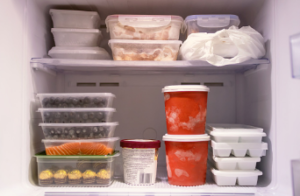Updated on May 8, 2023
Frozen Food Exporting
MarkwellFoods frozen food exporting has become an increasingly profitable venture due to its global appeal.
 However, the frozen food market can present unique challenges. For example, novel coronavirus outbreaks have raised serious safety issues regarding imports from affected countries; compliance with FSMA remains another critical concern for importers.
However, the frozen food market can present unique challenges. For example, novel coronavirus outbreaks have raised serious safety issues regarding imports from affected countries; compliance with FSMA remains another critical concern for importers.
Cost
Frozen food has quickly become one of the fastest-growing sectors of the food industry. Consumers appreciate its convenient nature and ability to preserve nutritional values, taste, and texture even after being frozen, providing consumers with plenty of meal preparation options, including frozen meats, poultry, and seafood products.
MarkwellFoods frozen food exporting costs depend on several factors, including product type, container size/weight/capacity and shipping method. Bulk shipping services may provide significant cost savings if sending multiple items simultaneously.
However, additional fees may apply if your frozen food item exceeds standard shipping dimensions and requires special packaging and transport services (i.e. frozen fish can’t fit into standard shipping boxes unless packaged explicitly for such use).
If you ship frozen food abroad, customs fees could become an added cost. Furthermore, transportation and storage expenses must also be factored into your calculations.
Be mindful of any additional taxes imposed upon your goods when shipping overseas. For instance, when shipping to China, taxes might need to be paid before they leave the country.
Quality
MarkwellFoods frozen food exporting can be an excellent way to expand your business and gain new customers, but it requires considerable planning. You must ensure your products arrive undamaged without spoilage and make the most of your budget.
Temperature control and specialised equipment are essential in producing premium frozen products, so selecting a shipping company that understands your needs and can deliver exceptional service is of utmost importance.
One of the critical aspects of freezing is maintaining an optimal freezer temperature throughout its journey – this is especially crucial when transporting perishable items like fruits, vegetables and other perishable goods.
Use a freezer thermometer to determine the ideal temperature for your shipment. Some companies provide online tools that assist in calculating what temperatures would work for any specific product.
As part of your freezer preparations, one thing to remember is the freezing process’s speed. Slow freezing can cause crystallisation to happen more rapidly, negatively impacting product quality.
Before shipping overseas, your product should meet any AQSIQ (the General Administration of Quality Supervision, Inspection and Quarantine in China) regulations. AQSIQ regulates imported goods; if yours falls under their purview, know their rules and regulations before shipping it overseas.
The best way to save money when shipping frozen food is using bulk containers, which are less expensive than individual orders. Furthermore, discounted shipping services may help bring down overall costs: for instance, FedEx provides several value-added services, such as ice packs and air-conditioned vehicles, at no additional charge. You should also find a company that lets you track your package to prevent mishaps or delays along its journey.
Safety
Freezing food is an effective preservation method for raw and cooked products that may spoil and lead to illness. Its freezing temperature (-18degC or below) inhibits microorganism growth that might otherwise damage it and ill consumers. Furthermore, freezing causes some bacteria and yeasts active at room temperatures to enter a dormant stage due to deactivation during this process.
Food should be stored at or below -18degC to preserve both its safety and quality, which could allow it to last months or years with proper handling and regular defrosting. Frozen food may even last decades! But its quality can deteriorate over time without adequately defrosting regularly and maintaining consistent temperatures.
Some risks could compromise their safety and quality at each stage of frozen food production, packaging, and distribution. For example, heat infiltration from people or equipment during operations could result in temperature fluctuations which deteriorate food quality.
Food may become unsafe to eat due to contamination with pathogens like Salmonella and Listeria monocytogenes, both highly infectious bacteria that can lead to severe illnesses if left contaminating our foodstuff.
Food contaminants can be kept at bay through various means, including applying a preventive control plan and meeting all relevant regulatory requirements for manufacturing, packaging and distribution processes. Furthermore, regular audits should also be conducted of these processes and the packaging materials used.
According to the China Municipal Commerce Bureau’s advice to importers, food imported from developing nations without rigorous regulations or trade certificates poses the risk of contamination. They advise against purchasing seafood products from areas experiencing severe novel coronavirus outbreaks because such imported items could contain the virus and pose serious contamination risks.

